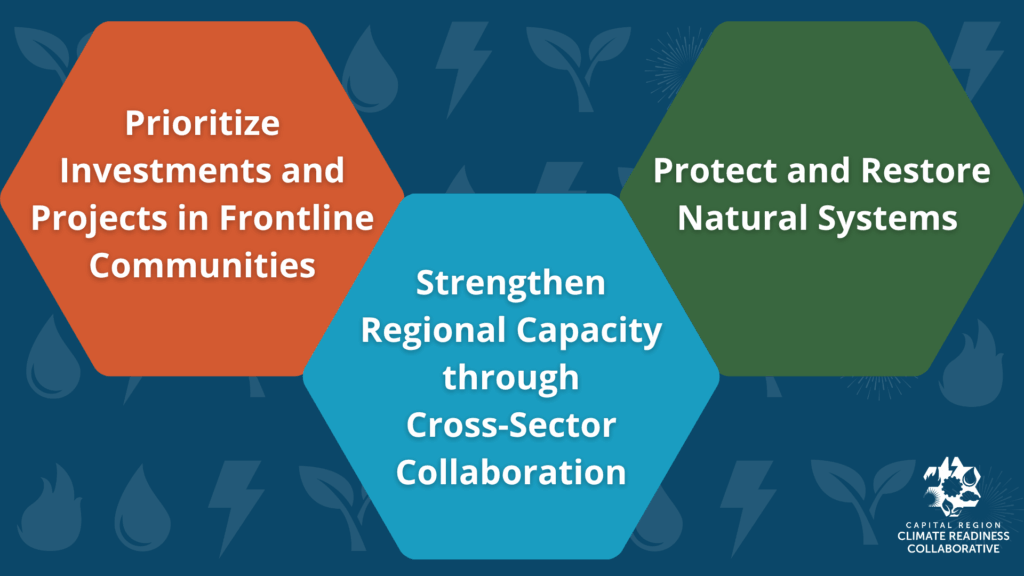Our Guiding Principles

1. Prioritize Investments and Projects in Frontline Communities
Natural hazards and disasters, such as heat waves, floods, drought, and fire, disproportionately affect low-income, rural, and historically marginalized groups, who often experience higher vulnerability and risk factors. The Capital Region Climate Readiness Collaborative will support projects, advocacy, and funding efforts that prioritize the health, safety, and resilience of frontline and disinvested communities across the Capital Region who are disproportionately burdened by climate impacts. The Capital Region Climate Readiness Collaborative recognizes disinvested communities as those experiencing income disparities, systemic racism, racial inequalities, climate change vulnerabilities, historical systemic oppression, geographic isolation, and exclusion from traditional systems of opportunity.
2. Strengthen Regional Capacity through Cross-Sector Collaboration
Effective climate action in the Capital Region requires cross-sector participation and engagement. The challenges of climate change go beyond jurisdictional boundaries, requiring shared strategies and partnership. The Capital Region Climate Readiness Collaborative supports initiatives that bring together diverse stakeholders, including government, nonprofit, business, academic, and community partners to align efforts, avoid duplication, and build partnerships. We seek opportunities that amplify our members’ work, prioritize resilience for burdened communities, and elevate the Capital Region’s role in advancing resilience for all of California. The Capital Region Climate Readiness Collaborative supports projects that recognize climate as connected to every facet of livability, from the economy, housing, and workforce development to transportation, the built environment, public health, and natural resource management. The Capital Region Climate Readiness Collaborative will support the region’s capacity to secure short- and long-term funding for projects that address interconnected solutions and include cross-sector partners.
3. Protect and Restore Natural Systems
From the Sierra Nevada forests and Delta waterways to grasslands and agricultural lands, the Capital Region’s natural systems are diverse and interconnected. Investments in the region’s natural systems, such as conjunctive use to improve water management, forest management to reduce wildfires that cause displacement and poor air quality, and carbon farming to capture carbon, positively impact the entire State. The Capital Region features a mix of rural communities, small towns, suburbs, and an urban core, presenting a wide variety of priorities and potential solutions for preservation and restoration efforts across the region. Rural counties’ priorities often center around green space preservation or necessary infrastructural improvements, while the urban core could focus on efforts to expand green spaces or rewild heavily built environments. The Capital Region Climate Readiness Collaborative prioritizes projects that address the Capital Region’s role in advancing resilience for all of California, such as efforts to conserve, restore, and improve the region’s ecosystems that address the critical role natural and working lands play in carbon sequestration, water security, biodiversity, and community resilience.
